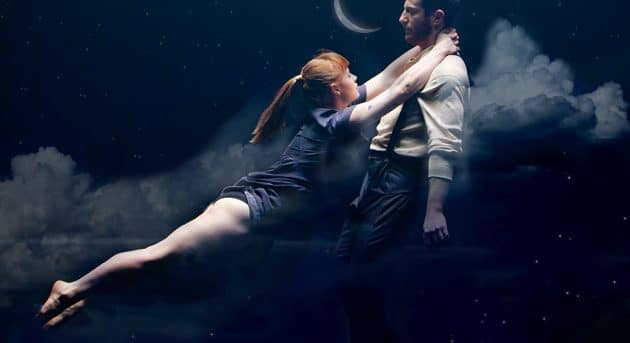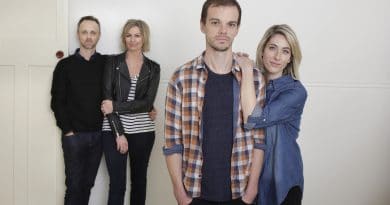Circa and Brandenburg Orchestra: Music takes flight
It seems at first like an improbable idea, combining circus with the courtly music of the Baroque era. Sure, circuses have music … but it’s not usually elegant Baroque music played on period instruments.
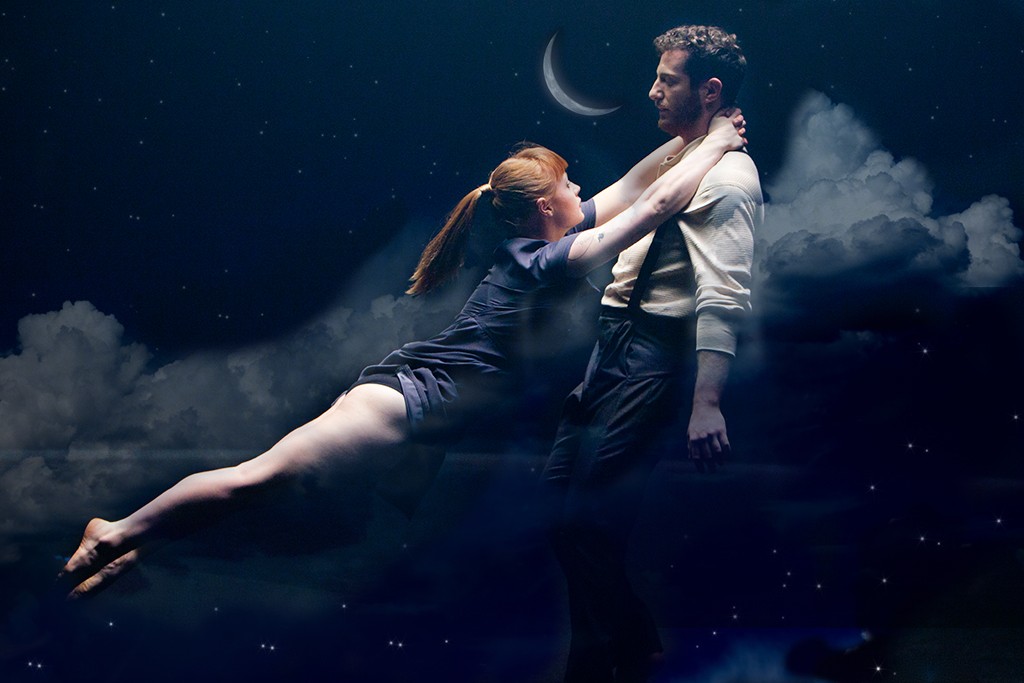
And yet Circa and French Baroque—in Sydney and Melbourne during July and August—is indeed a collaboration between circus company Circa and the Australian Brandenburg Orchestra. Yaron Lifschitz, Artistic Director of Circa, can explain.
“We just start by taking circus seriously as an artform,” he says. “What does this medium have to do to stop being seen as just a tarty entertainment?”
One answer arises out of his work with Circa: first, you need to train performers to the most breathtaking levels of circus skills, then create beautiful choreography for them, and then accompany the performances with carefully chosen music, often classical.
Oh, and have really, really accomplished musicians playing.
And there you have it: circus displays a whole new expressive range. Or, as Lifschitz says, Circa presents circus as “a work of philosophical and poetic depth”; circus that is “honest, moving and touches the hearts of our audiences”.
The company’s collaboration with the Brandenburg Orchestra will involve not just musicians steeped in the Baroque era and playing those period instruments, but also French soprano Claire Lefilliâtre. She contributes glamor along with virtuosity, and her passion for singing the music of the period extends even to her study of its gestures and body language.
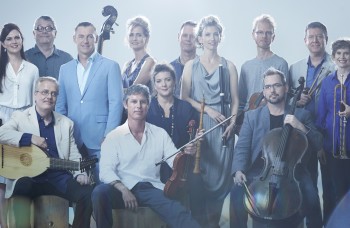
The initial idea for the show came from Paul Dyer, the Australian Brandenburg’s Artistic Director. Says Lifschitz: “Paul Dyer had the idea of adding circus to French Baroque to enhance its power, to add some dramatics, to really reveal some new dimensions of the music. It’s not a repertoire that’s very well known, and it should be.”
From its inception, the Brandenburg Orchestra’s mission has been to find fresh, accessible ways to present music that is hundreds of years old and informed by Dyer’s careful musical scholarship.
Lifschitz finds Dyer’s approach appealing. “The Orchestra exemplifies innovation and renewal,” he says. “That’s a really great thing and so I was absolutely keen and thrilled to get on board.”
The music itself—including pieces by Rameau, Le Camus, Lully and others—suggested certain themes for the collaboration: “Paul and I got talking about heaven and earth and about the night, and the pieces coalesced around that. The program sort of came together and the gathering of ideas produced energy of its own.”
Out of that energy came visions of “a river of moonlight” flowing across the stage, with “strange creatures”—seven acrobats and aerialists—materializing out of the darkness as Claire Lefilliâtre “sings of love, longing and loss”.
The alchemy of stagecraft creates a mysterious, sensual world “where bodies seamlessly meld into song, where lives and loves intermingle and where the simple magic of singing speaks clearly to the heart,” says Lifschitz.
Of course, there are obstacles to any creative process, but Lifschitz sounds as if he relishes the challenges. “As you start to work with the acrobatics, and then with music and then the design,” he says, “there’s a thousand road blocks and a hundred flashes of inspiration from there on.”
Lifschitz admits that he didn’t always think highly of circus. He loved his childhood circus experiences, but after training as a director at the National Institute of Dramatic Art, he was dismissive. Well, what he actually says is: “I think the collective name for young directors is ‘sneer’.”
But then something unexpected happened: “It wasn’t until I was working on a few projects with some physical performers that I felt the real integrity and beauty of what they did. Every time our cast is on-stage, they are risking everything in front of an audience.”
That insight inspired Lifschitz’s goal of creating works of such high artistic calibre that they justified the risks taken by the performers: “I thought, that’s something that’s worth doing with one’s life.”
Lifschitz moved to Brisbane in 2000 to take on the role of Artistic Director for a company called Rock ‘n’ Roll Circus. He soon introduced classical music into the company’s productions. Since then, the company was re-named Circa and has performed in 32 different countries. In this year alone, ten different Circa productions will tour in 15 countries.
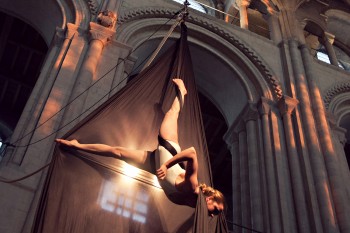
Recent musical collaborations demonstrate the range of musical directions the company has explored. For example, three female Circa aerialists performed to Katie Noonan’s folk-tinged song cycle Love-Song-Circus, in which she paid tribute to convict women. In another collaboration at the Barbican in London, Circa performed Opus accompanied by the Debussy String Quartet playing Shostakovich, which reviewer Matt Trueman described as “profound” as well as “sexy, fierce and astonishing”. Then there was How Like an Angel, a collaboration with Renaissance vocal ensemble I Fagiolini, performed in the soaring spaces of cathedrals.
The music helps audiences to experience circus in an extraordinary new way, but circus also eases audiences into some less familiar kinds of music. “When we did Opus, we had two and a half thousand people all listening to three and a bit Shostakovich string quartets,” Lifschitz says. “Many of them had never heard this music before. Usually in a Shostakovich program, you’d have 200 people in a church hall. We don’t want to be known just as a circus that works with music, though it’s one of our strong programming and philosophical strands. It speaks very deeply, directly to the heart and soul.”
It has taken much hard work for Lifschitz and Circa to reach this point. There were, he says, six years during which their only reviews were bad ones. But—his tenacity again evident—he sees that difficult time as part of the company’s growth: “I think it really hardened us in a good way. We were committed to something that was important. We have some kind of a sense that the work has to be done.”
Nevertheless, the improbable combination of circus and exquisite French Baroque song has not exhausted the artistic possibilities of circus. “There’s an awful lot more work to be done,” says Lifschitz. “Music, and multimedia, and theatre … a whole variety of ways to try to show that circus is an extraordinary art form.”
Sydney:
City Recital Hall, Angel Place, Wednesday 22 July, Friday 24 July, Wednesday 29 July, Friday 31 July, Saturday 1 August
Bookings can be made either through the Australian Brandenburg Orchestra (02) 9328 7581 or www.brandenburg.com.au
or through the City Recital Hall (02) 8256 2222 or www.cityrecitalhall.com
Melbourne:
Elisabeth Murdoch Hall, Melbourne Recital Centre, Saturday 25 July, Sunday 26 July
Bookings can be made either through the Brandenburg Orchestra 1300 782 856 or www.brandenburg.com.au
or through the Melbourne Recital Centre (03) 9699 3333 or www.melbournerecital.com.au

